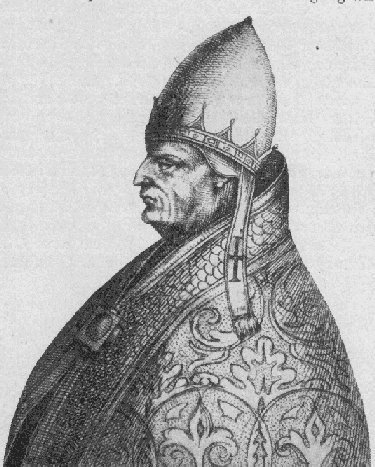
Pope Gregory VI, whose tenure as the Bishop of Rome spanned from 1045 to 1046, emerged as a pivotal figure during the ecclesiastical upheavals of the 11th century. Born John Gratian in Rome (dates of birth and death are uncertain, but his papacy is well-documented), Gregory VI’s papacy was marked by significant challenges that mirrored the broader crisis engulfing the Church at the time. His short but impactful reign offers a window into the complexities and controversies of medieval Church politics.
Ascension to Papacy
The ascent of Gregory VI to the papal throne was a direct response to the turbulent state of the papacy in the 11th century. This era, characterized by rampant simony (the buying and selling of ecclesiastical offices) and moral decay among the clergy, demanded decisive leadership. Gregory VI, known for his piety and deep commitment to the Church, ascended to the papacy in a period fraught with moral and ethical dilemmas.
His elevation to the papal office was not without controversy. It involved the abdication of his predecessor, Pope Benedict IX, a move mired in accusations of simony. Benedict IX, a young and morally dubious pontiff, had already served two tumultuous terms and his third term ended with a payment from John Gratian, leading to his ascension as Gregory VI. This act, while intended to rescue the papacy from disgrace, ironically entangled Gregory in the very issue he sought to resolve.
Gregory VI’s tenure, though brief, was marked by his earnest attempts to reform the Church. He confronted the rampant simony and moral decay, striving to restore the integrity of the papal office and the wider clergy. His commitment to these reforms brought him into direct conflict with the prevailing norms of the time, setting the stage for a dramatic confrontation with the secular and religious powers of his era.
His papacy, a critical juncture in the history of the Catholic Church, underscores the complexities of ecclesiastical leadership amidst widespread corruption and moral challenges. Gregory VI’s efforts, though ultimately leading to his downfall, paved the way for the broader reform movements that would shape the Church in the subsequent decades.
The Synod of Sutri and Exile
Pope Gregory VI’s papacy reached a critical turning point at the Synod of Sutri in 1046. This pivotal gathering, convened by Emperor Henry III, aimed to address the chaotic state of the papacy. The synod’s deliberations focused on the legitimacy of Gregory’s papacy, given the circumstances of his ascension. The Synod’s decision was clear yet controversial: Gregory VI was deemed guilty of simony, leading to his deposition. This marked a significant moment in Church history, as it underscored the complexities of ecclesiastical and secular interactions.
Following his deposition, Gregory VI chose a path of peaceful acceptance. He resigned and went into exile, living his remaining years in a monastery in Germany. His departure from Rome was more than a personal retreat; it symbolized a shift in the papacy’s approach to internal reform and its relationship with secular powers. Gregory VI’s exile was not just a personal journey but a reflection of the broader challenges facing the Church in reconciling spiritual authority with worldly affairs.
The legacy of Pope Gregory VI is a tapestry of controversy and reform. His brief papacy was a microcosm of the larger issues plaguing the Church in the 11th century. His efforts, though marred by the circumstances of his elevation, highlighted the urgent need for reform within the Church. Gregory VI’s tenure and subsequent exile paved the way for the later Gregorian Reforms, which fundamentally reshaped the Catholic Church’s governance and moral authority.
References
- Britannica, T. Editors of Encyclopaedia. “Gregory VI, Pope.” Encyclopedia Britannica. Accessed December 16, 2023. Encyclopedia Britannica.
- Cowdrey, H. E. J. “Pope Gregory VII (1073–1085).” Oxford Reference. Accessed December 16, 2023. Oxford Reference.
- PopeHistory.com. “Pope Gregory VI.” Accessed December 16, 2023. Pope History.
- Robinson, Ian. The Papal Reform of the Eleventh Century: Lives of Pope Leo IX and Pope Gregory VII. Manchester University Press, 2004.
- The British Museum. “Gregory VI.” Accessed December 16, 2023. British Museum.
